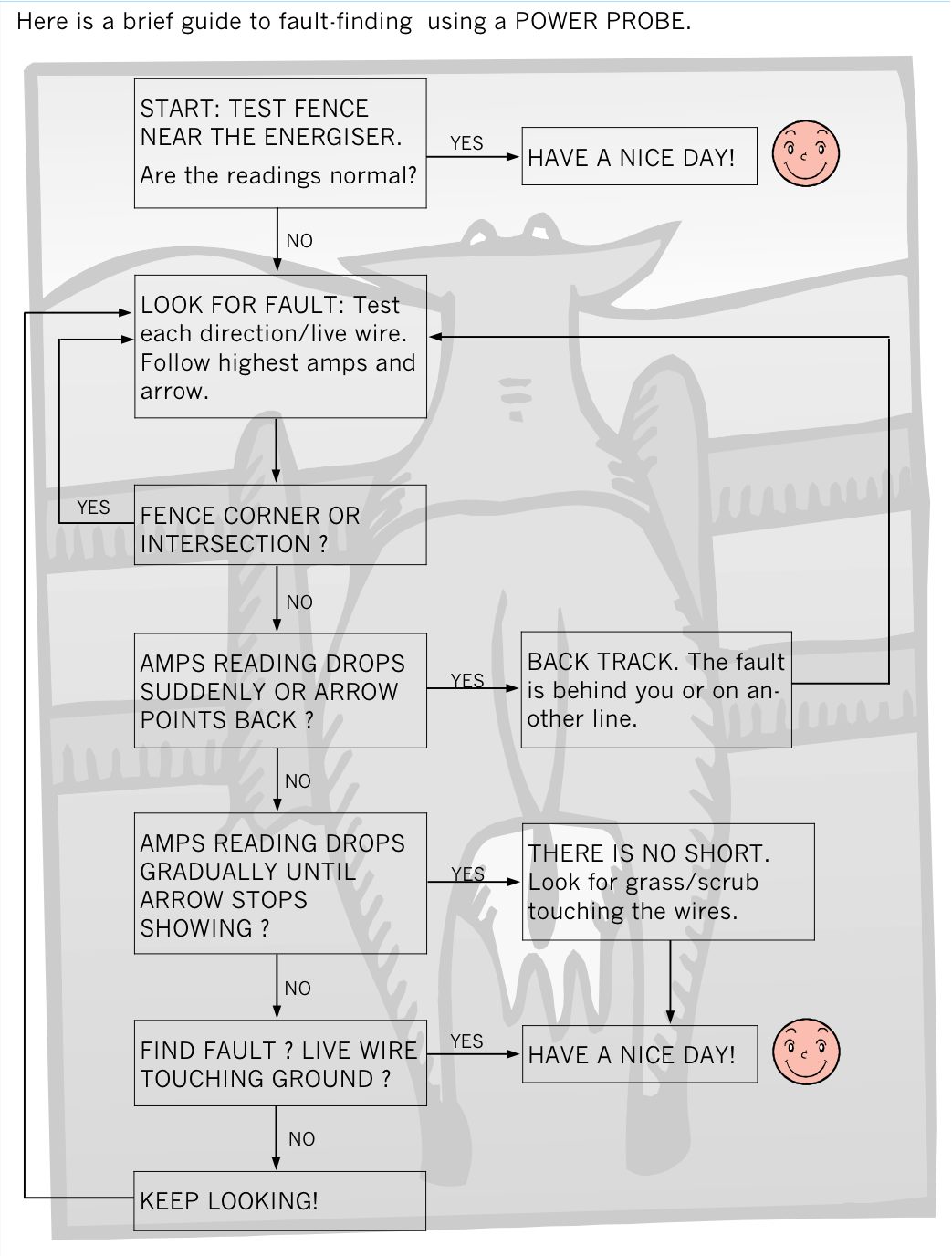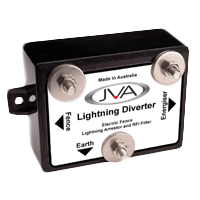Other Equipment
Electric Fence Fault Finders

Electric fences require mantenance, if the live wires become shorted or cut the voltage on part or all of the system can fall below that required to be an effective barrier.
In the early 1990's, I invented a device to show fence current, the direction to a fault and incorporated the first cordless electric fence voltmeter. The result was the Electric Fence Power Probe (R). After winning a couple of field day "new inventions" awards, I offered it to the largest company in the electric fence business (at that stage I was working in solar power). They decided not to take up the product, so we started making it in the garage at home and the rest, as they say, is history. The Power Probe was and is still a great product which is sold all around the world under many different labels. Sure there are copies, but one made by Pakton is still the best.
For example, the picture above shows a JVA brand 'Fault Finder'. See here for more details.
 Back to top
Back to top
Lightning Diverter

Due to their nature electric fences are prone to being effected by lightning. The lightning does not even have to strike the fence itself, a strike anywhere in the near vicinity of the fence can cause a voltage spike on the fence. A direct strike can cause voltage on the live wires of up to approx 300kV, with currents of 1kA which travel down the fence wire back towards the energiser. Lightning strike incidence varies greatly over the world from 0.1 strikes per square km per year to about 70 in highly prone areas. If you live in a lightning prone area you should protect your energiser with a good electric fence lightning diverter.
The Pakton designed diverter shown is designed to protect your energiser from damaging lightning surges. It contains a multi-stage diverter including Gas Arrestors, Inductors and MOV's all potted in epoxy.
It is simply wired in between the energiser and the fence.
Many electric fence companies offer a lightning diverter which is really only a spark gap. Spark gaps are slow to operate, letting through dangerously high voltages before they strike an arc. This is why spark gaps are seldom used in the wider electronics industry, when they are they are almost always backed up with a second stage of faster devices like MOV's.
A fence side diverter cannot protect the energiser from surges coming from the mains, for that you can use a simple mains surge protector.

 Electric Fences.net is written with the purpose of providing free, quality information about electric fencing.
Electric Fences.net is written with the purpose of providing free, quality information about electric fencing.